Overview
The Brockhouse beamlines share several sample environments. If you would like to use one of these systems in your next run, please mention it in your proposal.
| Device | Temperature Range | Sample Format |
|---|---|---|
| Oxford Cryostream 800 Plus | 80K to 500K (-193C to +226C) | Capillary, planar, single crystal |
| High temperature gas flow furnace | 298K to 1473K (+25C to +1200C) | Capillary |
| Helium cryostat | 10K to 450K (-263C to +177C) | Capillary, planar, single crystal |
| Linkam heating/cooling stages with gas atmosphere | 77K to 623K (-196C to 600C) | Capillary, planar |
Oxford Cryostream 800 Plus
Provides temperature control from 80 – 500 K (-193 – +226ºC) by blowing nitrogen gas over the sample. Maximum ramp rate is 6º/minute. We have two of these on mobile carts. They can be used on all three beamlines.
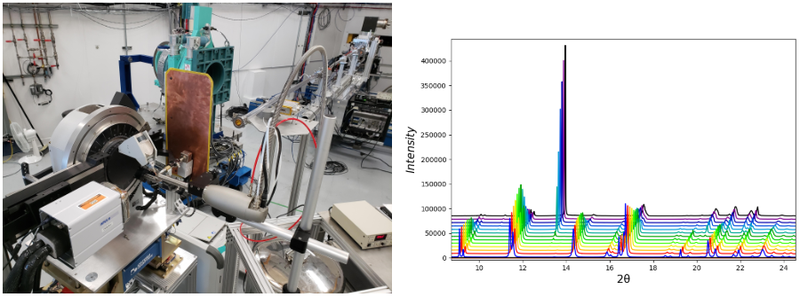
(Above left) Cryostream running on the Bruker endstation. (Above right) Following a phase change in KNO3, from orthorhombic to trigonal, using X-ray powder diffraction. Diffraction patterns were collected from 124ºC to 144ºC in 2ºC steps with the cryostream on the Huber endstation.
High Temperature Gas Flow Furnace
Samples are loaded in quartz capillaries with outer diameters of up to 3 mm. Temperatures up to 1473 K (1200ºC) are possible, with gas flow. We have a few versions of this gas flow furnace within BXDS, which are extensions of the P. Chupas design (P. J. Chupas et al., J. Appl. Cryst. 41, 822, 2008). Its a lot like a lab tube furnace, but miniature. Some quartz capillaries are available at the beamline. Non-standard sizes need to be purchased by users. For more details, refer to the BXDS High Temperature Gas Flow Furnace manual.
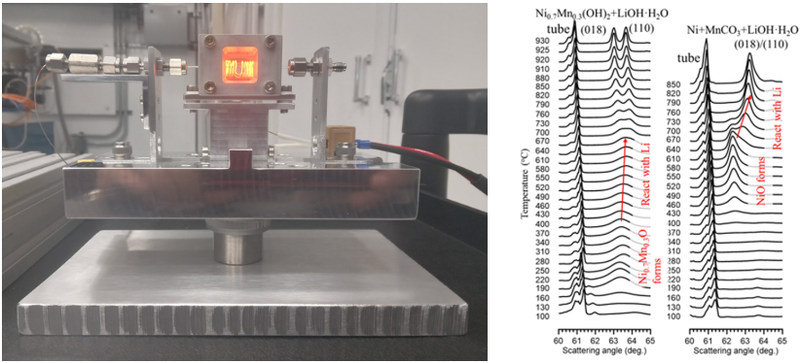
(Above left) The high temperature gas flow furnace. (Above right) Using in-situ X-ray diffraction to follow the high temperature synthesis of a lithium ion battery cathode material (N Zhang et al 2023 J. Electrochem. Soc. 2023, 170, 070515).
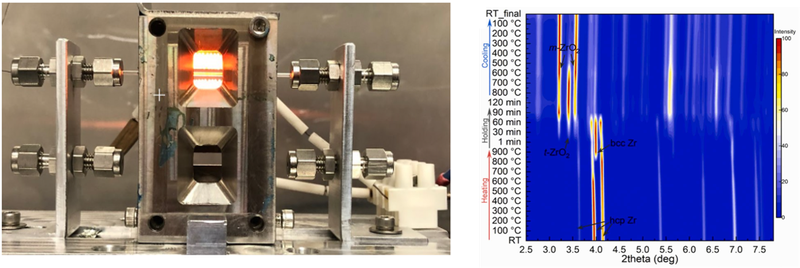
(Above left) Another version of the furnace, which can be configured for two samples. (Above right) Contour plots of diffraction profiles of Zircaloy-4 during heating and cooling (Wang et al., J. Alloys and Compounds, 992, 174554, 2024).
Helium Cryostat
Advanced Research Systems, Model DE202A-G-T. Enables low temperature experiments down to 10 K (-263ºC), with a beryllium dome over the sample. Samples can also be heated to 450 K (+177ºC). The mounting is very specific to the Huber diffractometer in the IVU beamline. Other implementations may be possible with advanced notice.
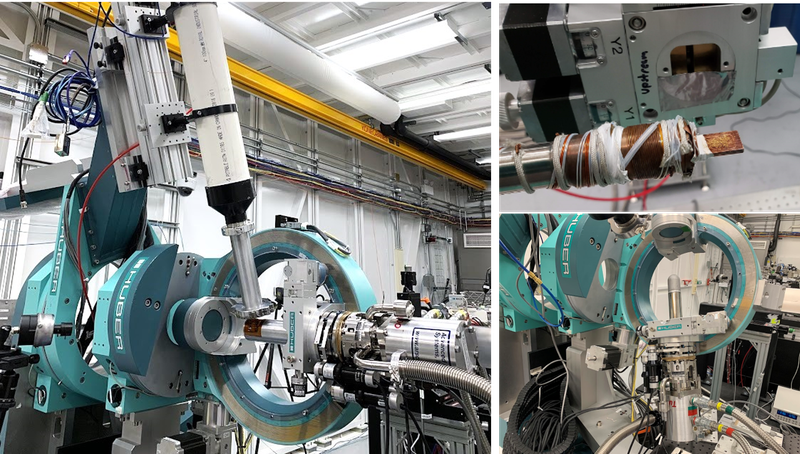
(Left) The helium cryostat set up on the Huber endstation. (Above right) A view of a powder sample with the beryllium domes removed. (Below right) A view with the beryllium dome installed.
Heating/cooling stage with gas atmosphere
Linkam HFSX350-GI and a Linkam FTIR600. These stages can be oriented horizontally for use with planar samples and grazing incidence measurements, or vertically and accept standard capillary samples. There is a flush-mounted heating/cooling element. The body can be water cooled. It has gas-in and gas-out ports, and a controlled environment is possible by fabricating a custom lid. It is fully integrated to BXDS beamline software, SPEC.
- Temperature range: 77 to 623 K (-196 to 350°C using HFS350V-GI and up to 600°C using FTIR600). Integrated 100 ohm platinum resistor sensor. Note minimum cooling temp is highly dependent on the sample and the gas environment.
- Heating rate: 30°C per minute
- Temperature stability: <0.1°C
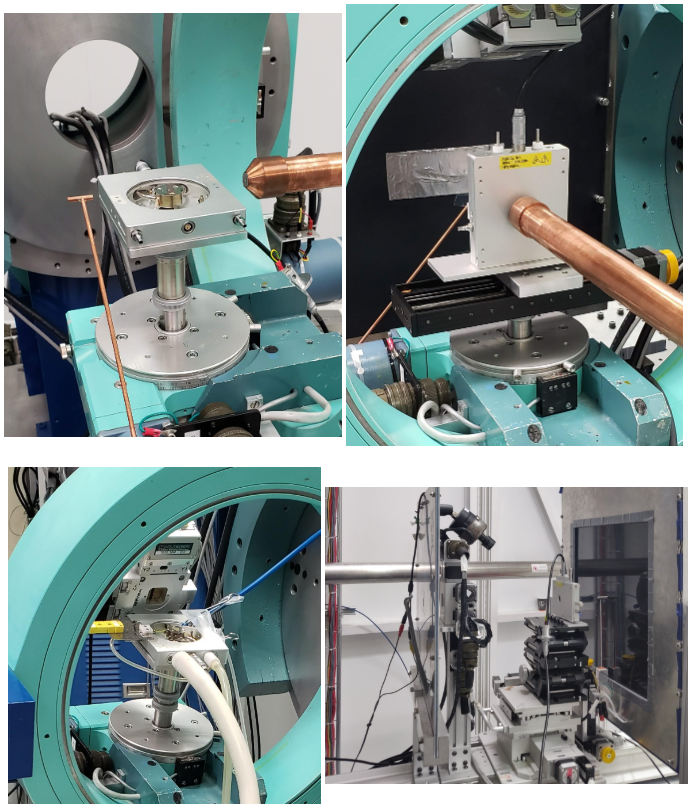
(Above left) Heating a planar sample in grazing incidence, WLE beamline. (Above right) Heating a capillary sample in transmission. (Below right) Cooling a planar sample in Bragg-Brentano. (Below left) Heating a sample in transmission, WHE beamline.